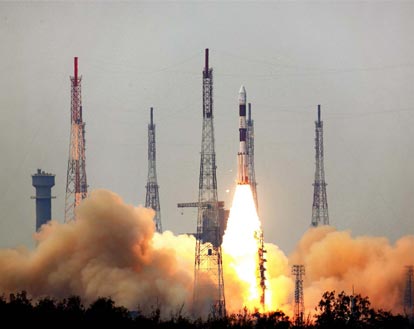On Monday, Sept. 28 at 12:30 a.m. EDT, The Indian Space Research Organization (ISRO) successfully launched seven satellites into orbit from the Satish Dhawan Space Centre (SDSC) in Sriharikota, India. One of the satellites is the country’s first ever space observatory. This mission, known as PSLV-C30, lasted about 23 minutes and 32 seconds.
“The most important passenger of the mission is likely the Indian Astrosat spacecraft. It is the country’s first dedicated astronomical satellite that will be used for the simultaneous multi-wavelength observations of various celestial objects. Astrosat will be used to observe the universe in the optical, ultraviolet, low and high energy X-ray regions of the electromagnetic spectrum. Whereas most other, similar satellites are capable of observing a narrow range of wavelength band,” according to Spaceflight Insider.
“The capability to cover the full spectrum of wavelength simultaneously is the unique feature of Astrosat,” Mylswamy Annadurai, the director of ISRO’s Satellite Centre in Bengaluru, said.
The Astrosat will also study the magnetic field and birth regions of neutron stars and high energy processes in star systems in other galaxies. This spacecraft is capable of detecting new x-ray sources in space.
“Astrosat is not the first of its kind but is the best so far. It is the best all-rounder in the world. It is a one-stop shop for studying astronomical sources,” Varun Bhalerao, Post-Doctoral Fellow at the Pune-based Inter-University Centre for Astronomy and Astrophysics (IUCAA), added.
“Five of Astrosat’s payloads are chosen to facilitate a deeper insight into the astrophysical processes occurring in various types of astronomical objects that constitute our universe. These payloads rely on the visible, Ultraviolet and X-rays coming from distant celestial sources. The most prominent of Astrosat’s instruments is probably the UVIT (Ultraviolet Imaging Telescope), a tool capable of observing the sky in the visible, near ultraviolet and far ultraviolet regions of the electromagnetic spectrum,” according to Spaceflight Insider.
The PSLV-C30 mission was India’s fourth launch in 2015 and the ISRO plans to conduct two more launches by the end of the year.
